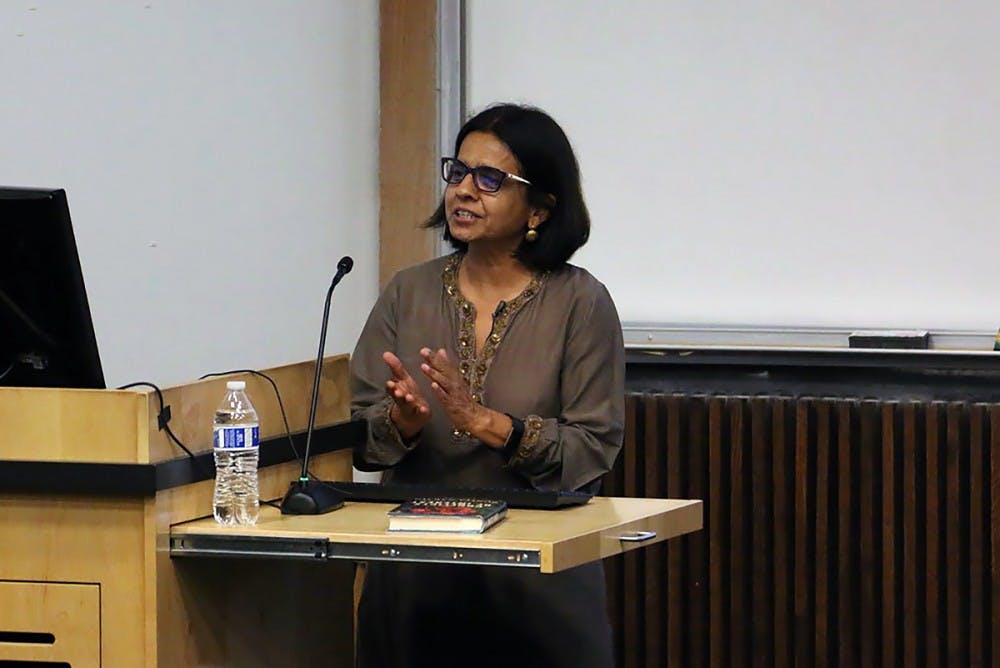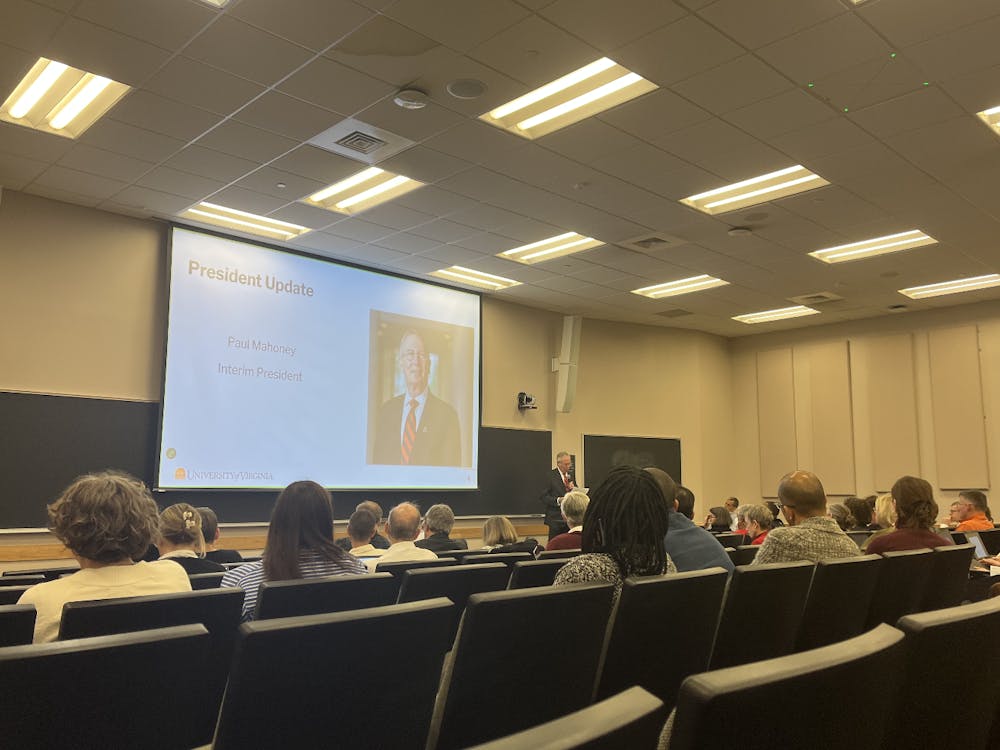Dr. Sunita Narain, an internationally-acclaimed environmentalist and writer, spoke Monday afternoon at the School of Architecture about her work in India, as well as the need for affordable, equitable and sustainable cities as a means of combating pollution and climate change.
Narain specializes in environmental policy and development in India and serves as the current director general of the Centre for Science and Environment in New Delhi. She is well known for her work in the documentary “Before the Flood,” in which she worked with actor Leonardo DiCaprio to illustrate the worldwide effects of climate change. Narain was also named by TIME as one of its 100 most influential people in 2016.
Narain came to the University for the first time as this year’s speaker for the Lillian K. Stone Distinguished Lecture in Environmental Policy, an annual speech started in 2014 to honor an influential U.S. Department of the Interior staff member. Co-hosted by the School of Architecture and the School of Law, the lecture series is intended to fulfill the “educational and intellectual commitments of the two schools” by hosting speakers in the fields of environmental study, design and policy, according to Architecture Dean Ila Berman, who introduced Narain.
Narain began her lecture by posing the question of existing conflicts of interest and how varying views of what a modern city should look like have adversely affected sustainable and equity planning of urban cores.
According to Narain, cities such as Shanghai, London and New York serve as a singular stereotype of many individuals’ views of a modern city. This stereotype of a modern city is unattainable in many places throughout the globe, and the struggles of many urban areas to combat pollution have been the result of a lack of vision of a livable city that is both inclusive and sustainable.
“There is no concept of a city that is livable because it is inclusive,” Narain said. “For us, the very concept of what is a modern city is unattainable.”
Narain spent the majority of her talk highlighting the adverse effects of water and air pollution on urban cores, most notably Delhi. Although Delhi has been able to solve a portion of their air pollution crisis through bypassing incremental measures of change and moving directly to using natural gas for fuel, many other cities — especially those in the global South — “have used methods that externalize the problem or push it to another time.”
Additionally, the evolution of processes used to clean the atmosphere has inadvertently resulted in the evolution of new pollutants in the atmosphere. Narain stressed the urgency of not having time, money or air space to continue putting off the threat air pollution poses to the global climate.
“We have always been behind the problem,” Narain said, adding that air pollution “is a life and death problem, and it’s for all.”
Water pollution, according to Narain, is a problem in global cities due to the lack of effective planning for both water sourcing and water waste treatment. Water, over time, has been sourced from increasing distances from urban cores, and sewage treatment has been water-based rather than land-based and primarily in impoverished areas of cities.
Narain used the inequality in water treatment to segue into her proposed solutions for creating sustainable cities, stating that urban planners and designers must change the way cities are conceptualized in order to make them inclusive, affordable and compact. To Narain, if a city does not fit these three criteria, then it cannot be sustainable.
“Technologies for sustainability are unaffordable … they have been designed for the rich, by the rich,” Narain said. “Sustainability is about affordable growth. It’s about inclusive growth.”
In order to successfully combat air and water pollution and make a city inclusive, affordable and compact, Narain said urban planners must reinvent perceptions of mobility and city planning in order to allow for both the wealthy and poor to take part in sustainable methods of transportation and waste treatment.
“Planning demands that we have to talk about quality of public services,” Narain said. “Public services must be designed to meet needs of rich and poor — at affordable but differentiated costs.”
Ultimately, cities must be less resource intensive and capital intensive in order to heighten sustainability and inclusivity. To Narain, sustainability is a matter of politics and justice. Changing perceptions of mobility, design and sustainability among both the elite class and the lower classes — as well as taking measures to effectively design for social inclusion — is one of the largest steps to creating truly sustainable modern cities.
“Unless I get the right to walk, I don’t get the right to clean air, and it’s as fundamental as that,” Narain said.







